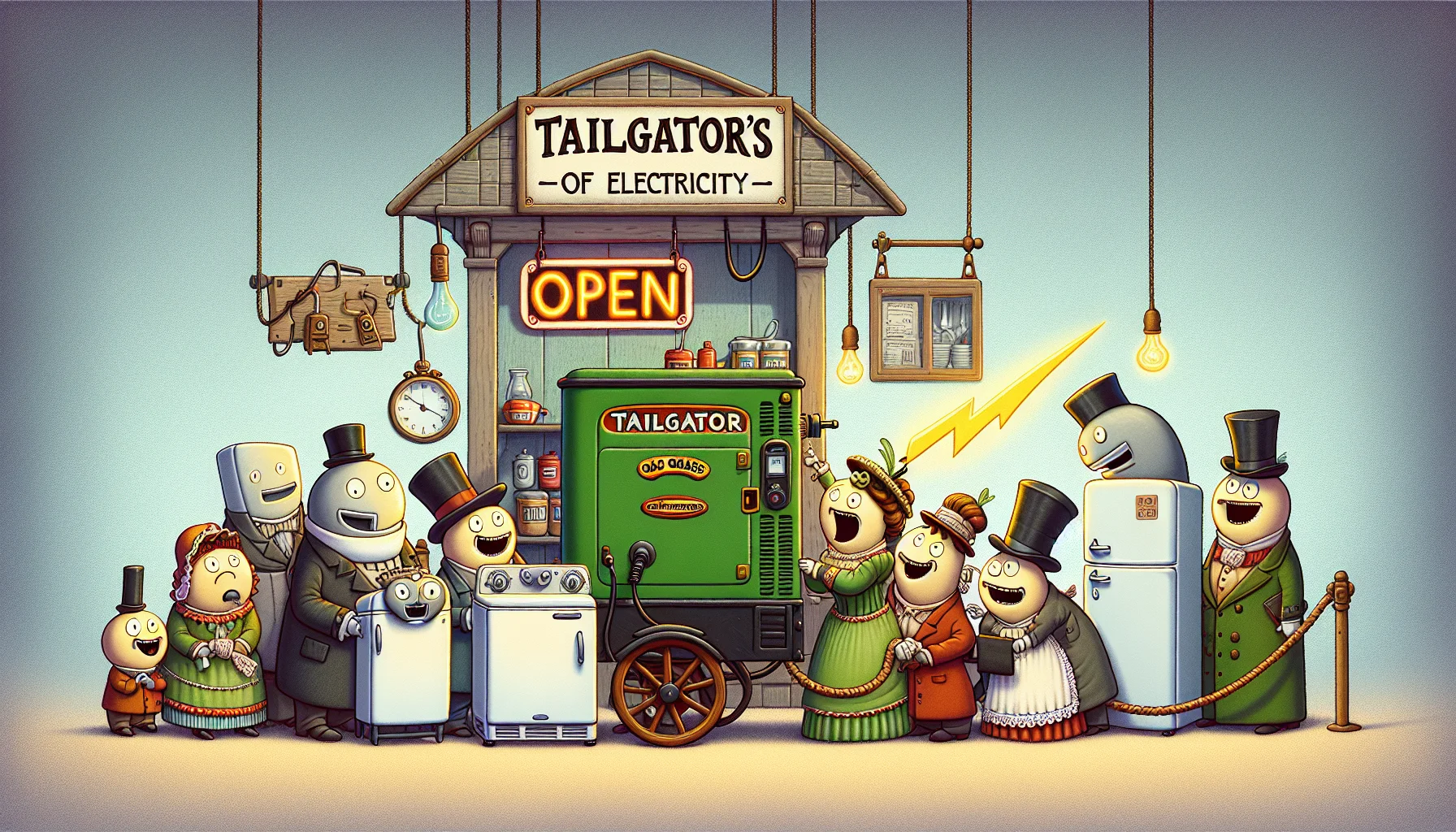Tailgator gas generator Quiz
Test Your Knowledge
Question of
Introduction to Tailgator Gas Generators
Tailgator gas generators are portable power solutions designed to provide electricity in situations where access to the power grid is unavailable or unreliable. These generators operate by burning gasoline to produce electrical power, making them an ideal choice for outdoor activities such as camping, tailgating, and emergency situations where power outages occur. Tailgator gas generators are known for their compact size, ease of use, and ability to generate a sufficient amount of electricity to power small appliances and charge electronic devices, making them a versatile tool for a wide range of applications.
How Tailgator Gas Generators Work
Tailgator gas generators convert gasoline into electricity through a simple yet effective process. At the core of the generator is an internal combustion engine, which is powered by gasoline. When the engine is started, it begins to rotate a small turbine. This turbine is connected to an alternator, which is responsible for converting the mechanical energy produced by the engine into electrical energy. The electricity generated is then made available through the generator's outlets, ready to power various devices and appliances. The efficiency and portability of Tailgator gas generators make them an excellent choice for outdoor activities, emergency power backup, and job sites where electricity is not readily available.
Benefits of Using Tailgator Gas Generators
- Portability
- Efficiency
- Cost-effectiveness
Selecting the Right Tailgator Gas Generator
When it comes to choosing a Tailgator gas generator, several factors need to be considered to ensure you select the right one for your needs. First, consider the power output, measured in watts, to ensure it meets the energy requirements of your appliances and tools. Secondly, evaluate the generator's fuel efficiency and runtime to ensure it aligns with your usage needs. Portability is another crucial factor, especially if you plan to use the generator for outdoor activities or need to move it frequently. Noise level is also an important consideration, particularly in residential areas or camping. Lastly, look into the generator's durability and the manufacturer's warranty to ensure long-term reliability and support. By carefully considering these factors, you can choose a Tailgator gas generator that best suits your needs and provides reliable power when you need it most.
Safety Tips for Tailgator Gas Generators
- Read the manufacturer’s manual before operating the generator.
- Operate the generator in a well-ventilated area to avoid carbon monoxide poisoning.
- Never use a generator inside homes, garages, basements, or any enclosed spaces.
- Keep the generator dry and do not use it in rainy or wet conditions. Use a canopy if necessary.
- Ensure the generator is placed on a stable surface to avoid tipping over.
- Check the generator regularly for fuel leaks and repair any issues before use.
- Store fuel in a properly labeled and approved safety container.
- Use heavy-duty extension cords specifically designed for outdoor use with generators.
- Allow the generator to cool down before refueling to avoid fire hazards.
- Keep children and pets away from the generator to prevent accidents.
- Ensure your generator is properly grounded to avoid electrical shocks.
- Do not overload the generator; respect the maximum capacity to avoid damage and risks.
- Have a fire extinguisher nearby in case of emergency.
- Regularly maintain your generator according to the manufacturer’s guidelines.
Maintenance and Care for Tailgator Gas Generators
Maintaining your Tailgator gas generator involves several key practices that can help extend its lifespan and ensure it operates efficiently when you need it most. Regularly check and change the oil, especially after the first 20 hours of use and every 100 hours thereafter. Ensure the air filter is clean and replace it as needed to keep the engine running smoothly. Always use fresh, stabilized fuel to prevent buildup inside the engine. It's also crucial to run your generator every three months for at least 30 minutes to charge the battery for electric start models and to prevent the carburetor from gumming up. Keep the exterior clean and store your generator in a dry, ventilated area to avoid moisture damage. By following these simple steps, you can significantly enhance the performance and longevity of your Tailgator gas generator.
Conclusion: The Future of Tailgator Gas Generators
Tailgator gas generators have emerged as a critical component in the realm of electricity generation, providing a reliable and portable power source for a wide range of applications, from emergency power supply to recreational use at outdoor events. Their importance in today's world cannot be overstated, as they offer a convenient solution for immediate electricity needs in areas lacking access to the main power grid. Looking ahead, the potential future developments for Tailgator gas generators are promising, with innovations focusing on improving fuel efficiency, reducing emissions, and integrating smart technology for enhanced user control and monitoring. These advancements are expected to further solidify their role in both emergency preparedness and the broader pursuit of sustainable and accessible energy solutions.












